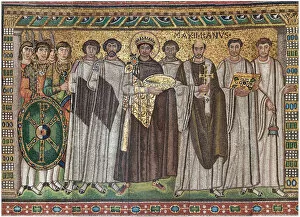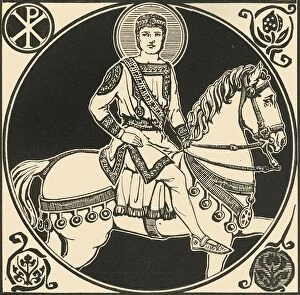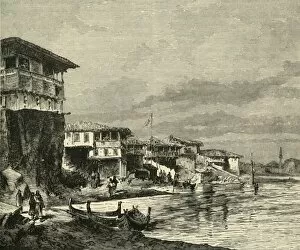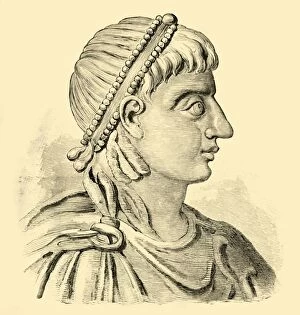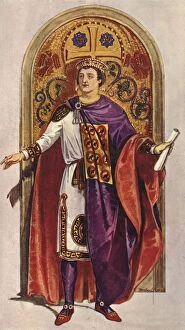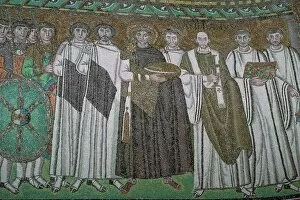Justinian L Collection
"Emperor Justinian I: A Visionary Ruler and Patron of Byzantine Art" Step back in time to the early 20th century
All Professionally Made to Order for Quick Shipping
"Emperor Justinian I: A Visionary Ruler and Patron of Byzantine Art" Step back in time to the early 20th century, where captivating depictions of Emperor Justinian I and his court come to life. Through the lens of renowned creators like Herbert Norris and unknown artists, we catch a glimpse into the grandeur of this influential Byzantine ruler. Intriguingly, one mosaic showcases two monks presenting silkworms smuggled from China to Emperor Justinian himself. This act reveals his relentless pursuit of knowledge and desire to expand the empire's wealth through trade. Another masterpiece transports us inside the majestic Hagia Sophia in Constantinople (now Istanbul), Turkey. Built under Justinian's reign, this architectural marvel stands as a testament to his ambition and devotion to Christianity. Delving deeper into history, we encounter an awe-inspiring floor mosaic depicting an eagle fiercely battling a snake - symbolic of power triumphing over evil. This artwork hails from the Great Palace in Istanbul during Justinian's rule, showcasing his unwavering determination in protecting his realm. Notably, another mosaic portrays Emperor Justinian surrounded by members of his court – a vivid portrayal that captures their regal attire and dignified presence. It serves as a reminder that behind every great leader lies a team supporting their vision. Moreover, we are transported further back in time with an exquisite Byzantine mosaic featuring the Virgin Mary alongside both Emperor Constantine and our enigmatic protagonist himself - Emperor Justinian I. This artwork highlights their shared commitment to faith while solidifying their place within religious iconography. Justinian I was not only known for expanding territorial boundaries but also for fostering artistic patronage that would shape Byzantine art for centuries to come. These stunning visual representations offer glimpses into an era defined by opulence, intellectual curiosity, and spiritual devotion under the leadership of one remarkable emperor – Justinian I.

